In this beautiful Full Moon phase our attention turns to potatoes and other root crops.
I got our early potatoes in today – Maris Anchor, Rocket and Cliffs Kidney.

Hard to find room with a big bed full of onions (doing well) and one of garlic (not doing well). But I did find a couple of spots. Forked it all through first to loosen up the soil, then added some homemade compost.

Then I created trenches – some with the spade, some with my hands which made me feel like I was making sandcastles!

In went the chitted potatoes with some of our lovely comfrey sprinkled on top. Just a small alert to only grow Russian Bocking 14 Cultivar comfrey which doesn’t self-seed, otherwise it’ll take over your garden.

Then some neem granules to ward off psyllids and a covering of the soil over the seed potatoes (around 5cm).
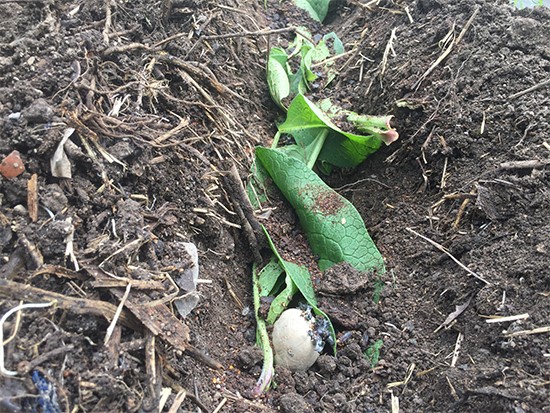
Then a generous application of rock dust and a water in. The idea is that as the seed potatoes grow you knock down the soil of the hills and cover up most of the leaves that are growing, until the potatoes are growing in hills and the mounds of soil become trenches.
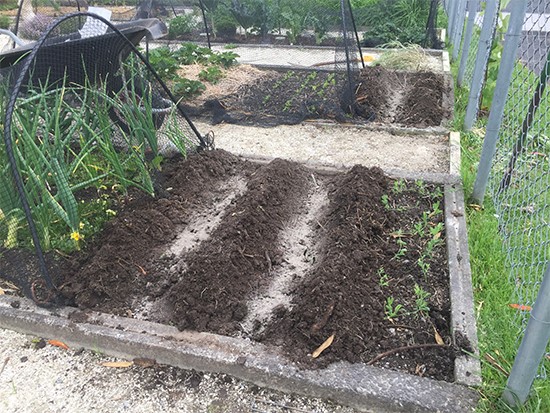
I had four little Florence fennel seedlings, so in they went to the root crop bed.
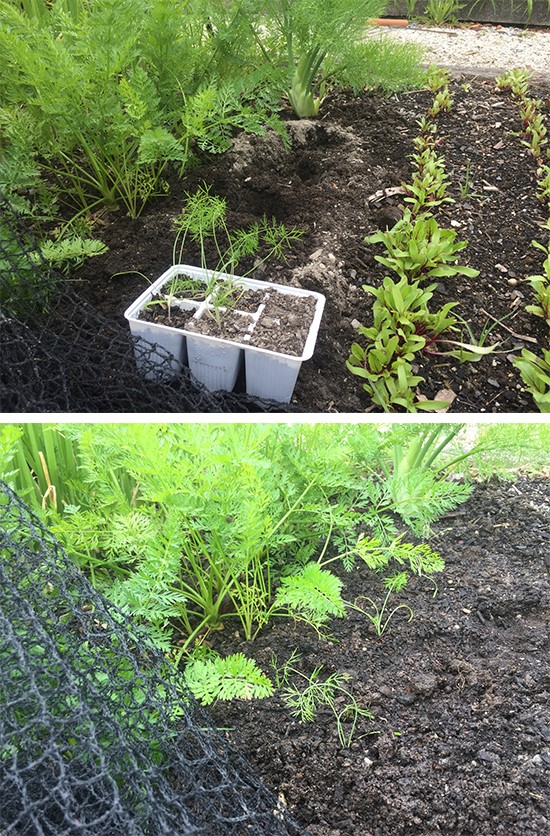
The beetroot were thinned. I always leave one clump however, in case I need to replace some.
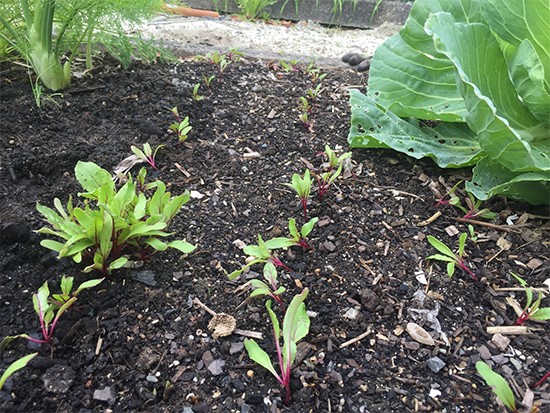
And lastly I sowed more carrots and because I haven’t had a good strike this spring yet, I’m laying a towel over the rows. This keeps the soil damp during the germination period which helps achieve more even germination.
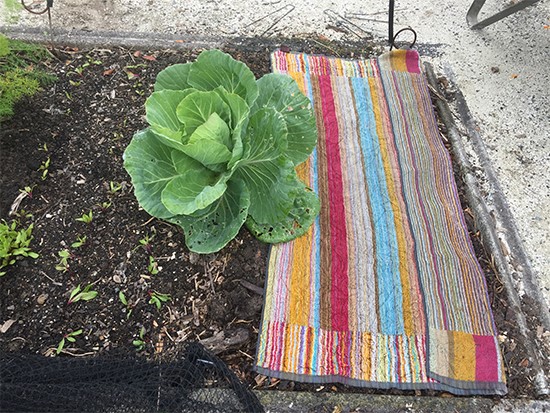
The cabbage you see above still needs a bit more time in the soil, but this beauty (below) was harvested to make room for the carrots!

Happy Labour Weekend!
From Jan and Rob.
Website designed by www.thecornerstorecollective.com
Developed by Richard Hpa
10 Responses
Dear Jan and Rob, thank you! Now I can be sure of the right way to plant potatoes, and I can’t wait to put them in xx
Fabulous! All the best 🙂
Hi Rob
I so enjoyed your talk at Onetangi Hall in the winter. I have just read your last few blogs which were great to catch up with activities in the garden. I haven’t been able to get hold of some tomato plants but I have some that are self seeded so I may just go ahead and pot them up and see how they do.
My query is with regard to my seaweed barrell. I found a fishhead on the beach mid July and thought to make a barrell solution (large) with some seaweed, sheep pellets and dandelions, thistles and cleavers. I’ve given it the occasional stir and its reasonably smelly (not too obnoxious, just when stirring) and a medium brown. I’m not sure if I should go ahead and dilute it and use it as a general fertilizer due to the smell. But I’m keen to give the fruit trees some before I mulch them. Or do you think I should discard?. And if you wouldn’t mind reminding me of the biodynamic stirring regime to use before using, I would be grateful.
I also think our guavas would benefit from some magnesium. I have magnesium chelate,. Do you think that would do the job?.
Thanks so much Maree Sea View Road
Oh Sorry. I see it is chelate iron I have NOT magnesium. I have used the iron on the Banksia and Lemon tree. I will get some epsom salt for the guavas to give them the magnesium they need. I also picked up a punnet of cauliflower and cabbage on my journey but I’m not sure if it is really the right season to plant them. What do you think?. Thanks Maree
Iron chelate not great for guavas. Epsom salts will be fine. Cauliflower and cabbage don’t grow well in warm conditions. They are susceptible to pests like the white butterfly that doesn’t survive in cool winter conditions 🙂
Hi Maree Self-seeded tomatoes will grow, but you will probably only get cherry tomatoes. The biodynamic method of stirring is turning it rapidly in one direction to create a vortex, then once it’s all going rapidly one way, quickly changing it to turn in the other direction. Biodynamic gardeners will do this for an hour, but 5 minutes or so will do the trick in our opinion. This aerates the mix, similar to what some people achieve when they add a pump to their liquid fertiliser. We dilute it to the colour of weak tea at the time of application. We also recommend wetting the ground of the crops you’re going to apply it to first, just so it’s diluted further. Magnesium would be fine on the guavas. All the best 🙂
Thanks for the step by step photos – makes it all so do-able. Happy growing!
❤️
Kia ora, I was so proud to get in my first spuds just on end of full moon phase and followed all of your very clear instructions but completely forgot the neem granules! Can I put them over the top of the blood and bone or have I missed my chance with them?
Thanks again
Melissa
Hi Melissa Fine to put them over the top of the blood and bone 🙂